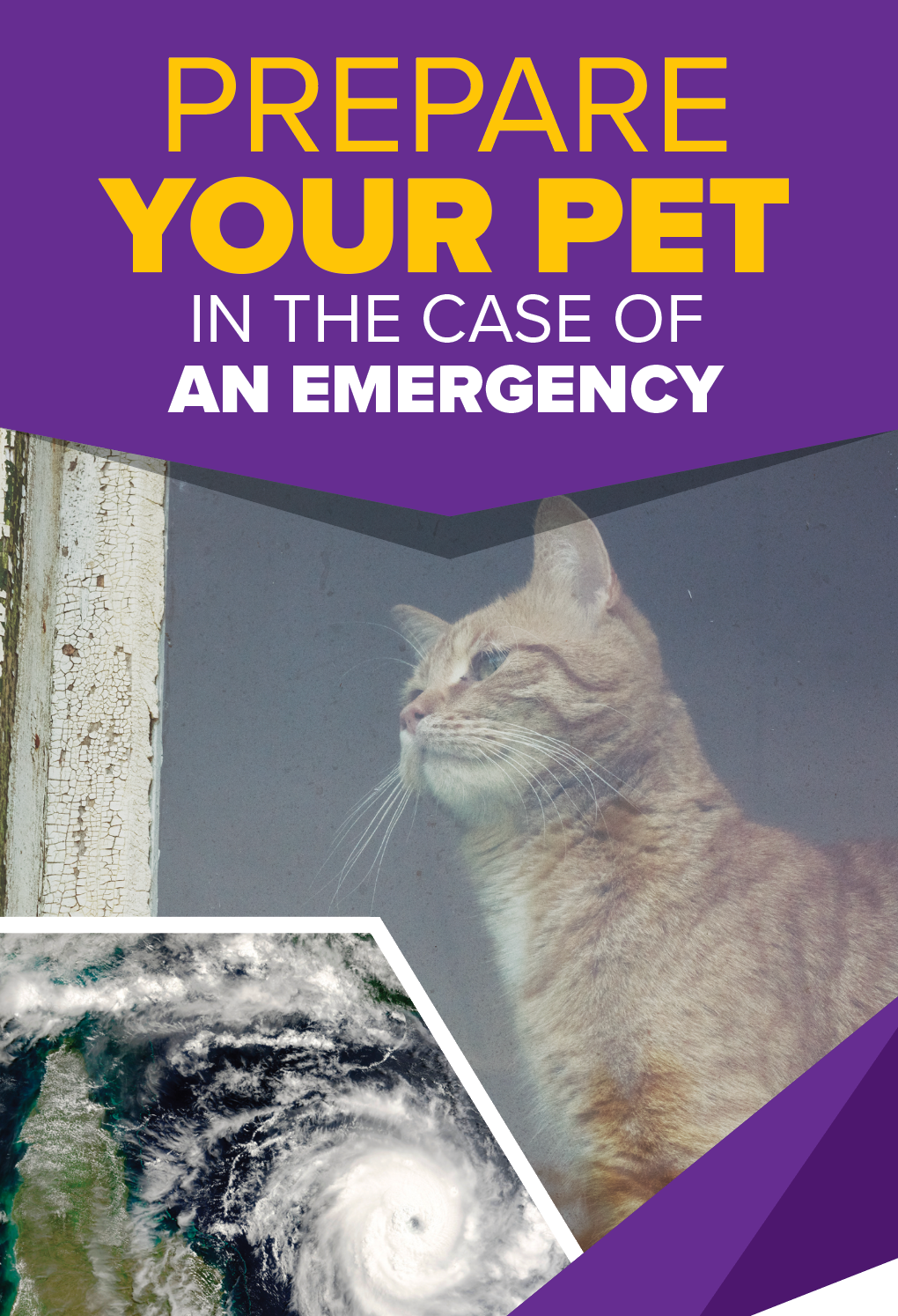Pets in disasters
) Prepare your pet in case of emergency
Prepare your pet in case of emergency
Most of us have an evacuation plan in place when it comes to natural disasters however many of us forget about how our pets will cope.
Here are some tips you can do to prepare well in advance of an emergency, which will assist in making evacuation with your pet run as smooth as possible.
BE PREPARED JUST IN CASE
PREPARE AN EMERGENCY KIT, HAVE AN EMERGENCY CHECKLIST
There are several things you as a pet owner can do to ensure your pet is as ready as possible to evacuate in the case of an emergency. Some of this can be arranged well in advance.
- Own a pet carrier. A pet carrier will help contain your pet if/when you must evacuate. It will also help keep your pet calmer. It is a good idea to practice putting your pet into its carrier and taking it for a drive. This will help get your pet used to travelling and being crated. Store your carrier in an easy-to-get-to place.
- Make sure your pet’s microchip details are up to date. If your pet does escape while you are evacuating, a microchip may be the only way you will be reunited. A collar with an ID tag is also beneficial.
- Keep vaccinations up to date and store the certificate with your other essential documents.
- Consider where your pets will go in the case of evacuation. This may be a boarding kennel or friends and family. Many evacuation centres in Australia will not allow pets to be taken there. Keep this in mind when planning.
- If there is enough time, make sure you have at least two weeks' worth of any medications your pet might require.
Most of your pet’s emergency kit can be pre-packed and stored in a carrier.
You should consider
a) at least one week of food - tinned or dry, not refrigerated,
b) medications and clear instructions to administer,
c) a small water bowl and food bowl,
d) litter tray and litter, along with bags to dispose of waste,
e) bedding and toys, and
f) a list of important contacts such as your veterinarian, local council, and local animal shelter.



 Prepare your pet in case of emergency
Prepare your pet in case of emergency
